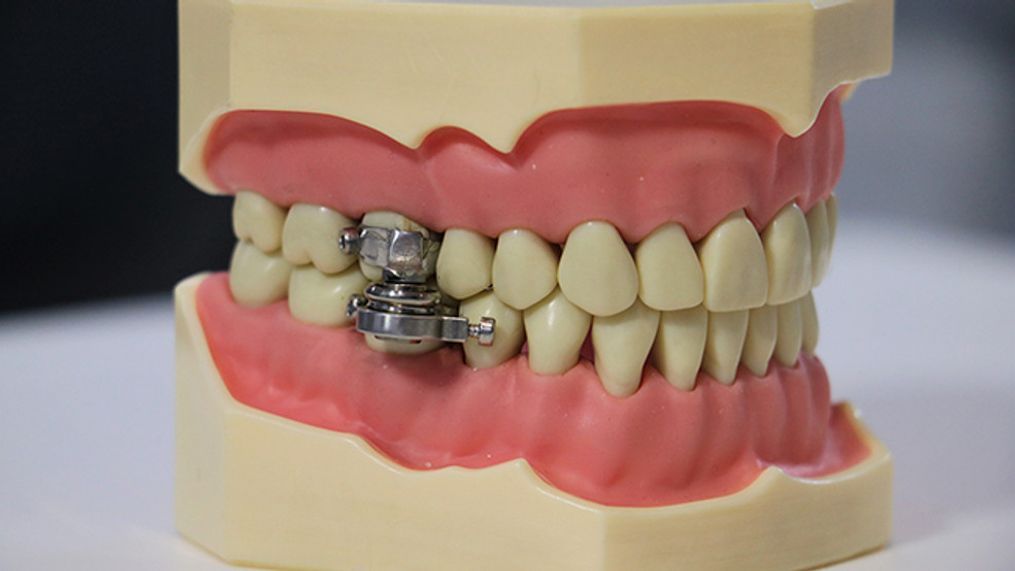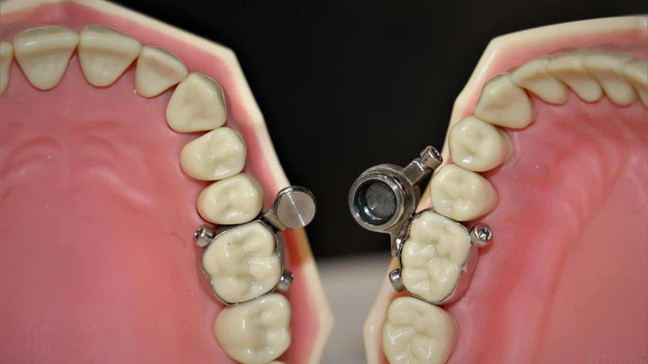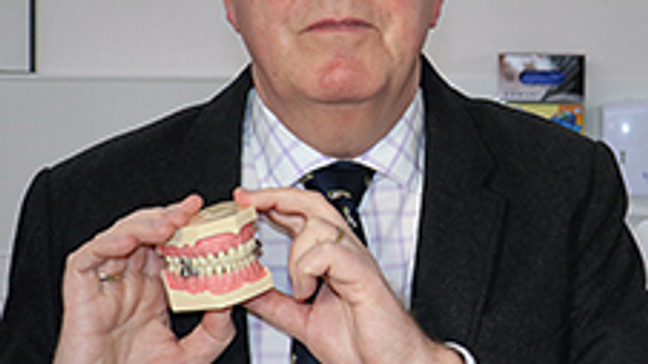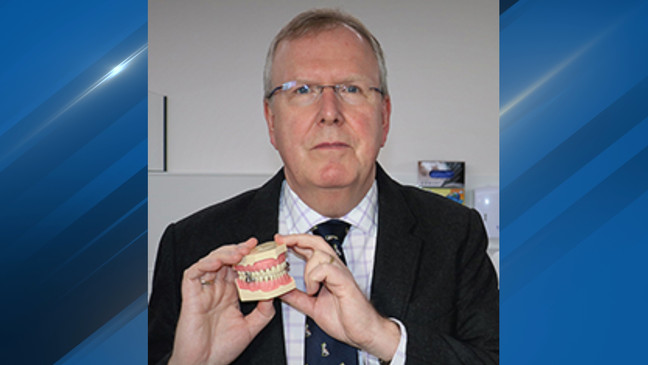New 'world-first' weight-loss device locks mouth shut, forcing a liquid diet
WASHINGTON (SBG) — Dubbed an alternative to weight-loss surgeries, researchers have developed a device that locks the user's mouth shut, allowing them only to open their mouths two millimeters, restricting them to a liquid diet. Users can still talk and breathe, however.
"DentalSlim Diet Control" is an intra-oral device that is installed on the upper and lower back teeth by a dentist, who can also remove the device. Users have a tool to open the device in case of an emergency.
The device uses magnets with "unique custom-manufactured locking bolts," according to researchers at the University of Otago, in Dunedin, New Zealand, who also worked with researchers from the United Kingdom.
Lead researcher, University of Otago Health Sciences Pro-Vice-Chancellor Professor Paul Brunton said:
"The main barrier for people for successful weight loss is compliance and this helps them establish new habits, allowing them to comply with a low-calorie diet for a period of time. It really kick-starts the process."
Those who participated in a trial lost an average of 14 pounds in two weeks, and, researchers say, they were motivated to continue their weight-loss journey. None of the participants used the tool to open their devices.
Brunton touted the device as a cheaper, less-invasive alternative to surgery. Researchers also say the DentalSlim Diet Control can be helpful for people "having to lose weight before they can undergo surgery, and for diabetes patients for whom weight loss could initiate remission," a news release stated.
"It is a non-invasive, reversible, economical and attractive alternative to surgical procedures," Brunton said. “The fact is, there are no adverse consequences with this device. Recent studies revealed 1.9 billion adults worldwide are overweight and 650 million are obese and being overweight or obese results in about 2.8 million deaths a year. It is estimated about 57 percent of the world’s adult population will be overweight or obese by 2030. In addition, psychological symptoms may be present, including embarrassment, depression and loss of self-esteem and obese people may suffer eating disorders together with stigmatisation [sic] and discrimination."
Researchers point out the cost of bariatric surgery, which can cost anywhere from $15,000 to $30,000, depending on various factors, including location. Researchers said patients then have to "live with the consequences of that for life, which can be quite unpleasant."
Researchers point out that the practice of wiring people's jaws shut, which was popular in the 1980s, is dangerous. "It came with risks; vomiting brought with it the risk of choking and after 9 to 12 months the patients developed gum disease. In some cases, there were continuing issues with restriction of jaw movement and some developed acute psychiatric conditions," researchers said.
Alternative strategies are required which may obviate surgery, or which reduce weight prior to surgery and so make it easier and safer," Brunton said. "The beauty of it is that once patients are fitted with the device, after two or three weeks they can have the magnets disengaged. They could then have a period with a less restricted diet and then go back into treatment. This would allow for a phased approach to weight loss supported by advice from a dietician allowing long term weight loss goals to be realised. [sic]”
The University of Otago posted about the device on Twitter Sunday, and the tweet is going viral... but probably not for any reasons researchers would want, with some comparing it to a torture device.
One user said:
You don’t need this torture device to go on a liquid diet. I did slimfast [sic] in the 90s and lost a tonne [sic] of weight quickly. I also started vomiting, taking laxatives and exercising obsessively. I put all the weight back on when I gave that up, but the damage it did is still with me.
Another posted a photo of a rack, a torture device used in medieval times, but was used as early as 356 B.C. in Greece.
The user said:
Brilliant, I'd like to submit my idea for a device to help short people be taller.
Several other sarcastic tweets prompted the university to follow up with two tweets, saying:
To clarify, the intention of the device is not intended as a quick or long-term weight-loss tool; rather it is aimed to assist people who need to undergo surgery and who cannot have the surgery until they have lost weight.
After two or three weeks they can have the magnets disengaged and device removed. They could then have a period with a less restricted diet and then go back into treatment. This would allow for a phased approach to weight loss supported by advice from a dietician.
You can see thousands of responses to the university's original tweet in this thread. WARNING, SOME MAY CONTAIN ADULT LANGUAGE.





